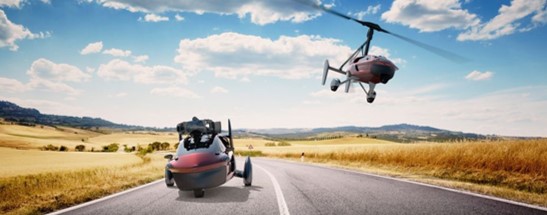However, this may have been a case where people were so busy figuring out if they could that they never bothered to ask if they should. Flying cars are a very dangerous idea, and here are a few reasons why.
Lack of Training
Purchase of a PAL-V flying car costs $399,000 (for the more affordable option), and it comes with flight training. That seems appropriate, since the vehicle more closely resembles a helicopter than a car. But their website is somewhat fuzzy on the training process. The site boasts of beautiful training locations but doesn’t say how many hours are required. There’s no mention of what exactly is covered in the training. All it really says is that the training will be quick and easy.
In contrast, obtaining a driver’s license is neither quick nor easy, but that is to be sure drivers are safe on the road. We shouldn’t be lax on license requirements just because there are less flying cars. After all, there’s no online defensive driving course for flying cars.
Potential For Disaster
A car crash can easily be deadly, but there are also countless little fender-benders every day. Everyone generally walks away from those accidents, but imagine what can happen when those accidents are up in the air. Once gravity becomes an extra factor in collisions, what would be minor accidents on the ground become major accidents in the air. Plus, when that flying car crashes to the ground, there’s a good chance there will be a car underneath it. Unfortunately, most drivers are not prepared to deal with falling debris, which could cause an even bigger catastrophe on the ground.
That is just in the case of two drivers/pilots that have gone through the “training” crashing into each other. There’s also no information on the PAL-V website on what to do in the event of equipment failure. In a car, if a tire blows out or we run out of gas, we pull safely to the shoulder or, at worse, stall on the highway. If something goes wrong in a flying car, there could be people FALLING OUT OF THE SKY.
There are also drones to consider. Never mind the military drones, which are operated by people who have gone through the necessary training. The issue is the drones that can be purchased from a local electronics store for about $100 and operated from cell phones. Will the PAL-V hold up if a drone crashes into it? Will the driver have gone through enough training not to panic if a drone smashes their windshield? These are just issues that can result from accidents. These drones are given out as Christmas gifts. A child might not understand the consequences of intentionally trying to damage a flying car, and disaster could follow.
Ultimately, if the idea of flying cars is ever going to work, we need to have strict regulations. Right now, people are so excited about the technology, but proper rules haven’t been put in place yet. Drivers/pilots need to be given extensive training, and flight paths should be established to keep flying cars at a safe distance from each other. For now, the world seems barely able to handle self-driving cars. Flying cars may be a step too far.

 Live Chat
Live Chat






